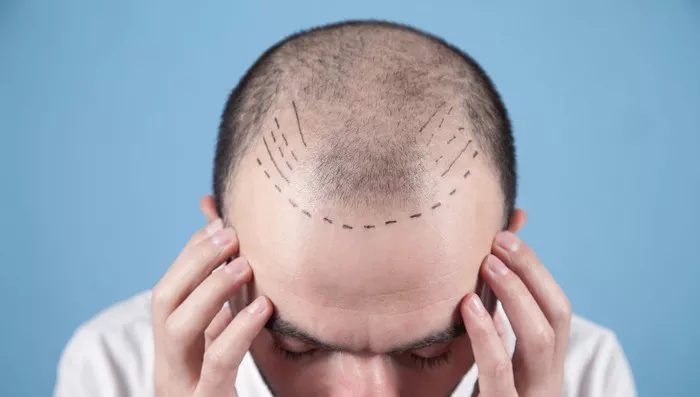Androgenetic alopecia, commonly known as genetic hair loss, can be a distressing experience. Hair transplant procedures offer a potential solution, but does this method effectively address the challenges posed by androgenetic alopecia? In this article, we delve into the world of hair transplants and their effectiveness in combating this prevalent form of hair loss.
Understanding Androgenetic Alopecia
Androgenetic alopecia, known as genetic hair loss, is a hereditary condition causing gradual hair thinning and loss. It’s influenced by genetics and hormones. In men, it often leads to receding hairlines and balding crowns, while women experience diffuse thinning. Genetic susceptibility causes hair follicles to be sensitive to dihydrotestosterone (DHT), a hormone derivative. DHT miniaturizes hair follicles, resulting in finer, shorter hair and eventual hair loss. Hormonal changes and age exacerbate the condition. Understanding the genetic and hormonal factors underlying androgenetic alopecia helps tailor effective treatments, including medications, hair transplants, and lifestyle adjustments.
Can Hair Transplant Really Cure Androgenetic Alopecia?
Hair transplant can significantly address the effects of androgenetic alopecia, but it may not be a complete cure. The procedure redistributes healthy hair follicles to thinning or balding areas, restoring a more natural appearance. However, it doesn’t alter the genetic predisposition or hormonal factors that cause androgenetic alopecia. The success of a hair transplant depends on factors such as donor hair quality, recipient site condition, and surgeon expertise. While it can provide remarkable aesthetic improvements, it’s essential to manage expectations and consider it as a long-term solution to manage the visible effects of the condition rather than a complete cure.
The Role of Hair Transplant
Hair transplant plays a pivotal role in addressing hair loss, particularly in cases of androgenetic alopecia. The procedure involves transferring hair follicles from areas less affected by hair loss (donor site) to areas with thinning or balding (recipient site). Through methods like Follicular Unit Extraction (FUE) or Follicular Unit Transplantation (FUT), skilled surgeons carefully implant these follicles to create a natural-looking hairline and restore density. It offers a viable option for individuals seeking long-term solutions to hair loss and improved self-confidence.
Effectiveness in Androgenetic Alopecia:
For individuals with androgenetic alopecia, hair transplant procedures can yield positive outcomes. The effectiveness of the procedure largely depends on several factors:
1. Stage of Hair Loss:
Hair transplants tend to be more successful in individuals with stable or minimal progression of hair loss. Transplants in advanced stages might require more grafts and careful planning.
2. Donor Area:
The success of a hair transplant relies on a healthy donor area with enough viable hair follicles to transplant to the thinning areas.
3. Recipient Area:
The scalp’s condition in the recipient area affects graft survival. Good blood circulation and a healthy scalp environment contribute to better outcomes.
4. Skill of Surgeon:
Choosing an experienced and skilled surgeon is crucial. Their expertise in graft placement and designing a natural hairline significantly impacts the result.
5. Expectations:
Realistic expectations are important. While hair transplants can provide significant improvements, they might not fully restore hair to its original density.
6. Combination Approach:
In some cases, a combination of hair transplant with other treatments like medications can offer enhanced results.
Conclusion
Hair transplants have proven to be effective in addressing androgenetic alopecia, offering individuals the chance to regain natural-looking hair. The procedure’s success relies on factors such as the stage of hair loss, the quality of the donor and recipient areas, the surgeon’s expertise, and patient expectations. Consulting a qualified hair restoration specialist, discussing your goals, and evaluating your suitability for the procedure is crucial for achieving the best possible outcomes.


